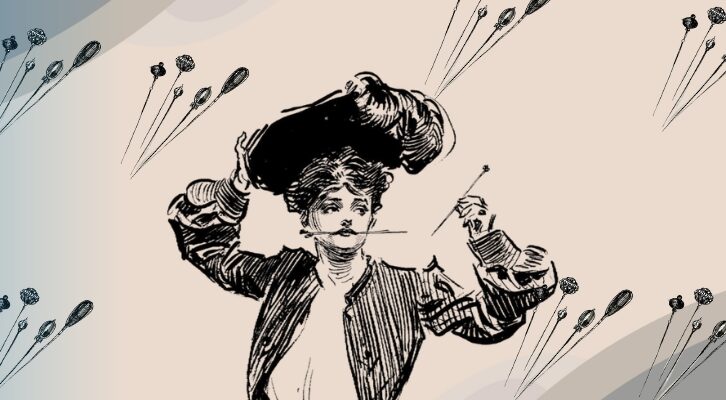
Did a Revolution in Latin American Publishing Make One Hundred Years of Solitude the Success It Is Today?
Álvaro Santana-Acuña on the Latin American and Spanish Booms of the 1960s
When One Hundred Years of Solitude hit the market in 1967, the book industry in Spanish was booming. This situation was unimaginable for most writers and critics just a few years before. “How can literature exist,” writer Mario Vargas Llosa asked, “in countries where there are no publishing houses, where there are no literary publications, where if you want to publish a book you must finance it yourself?”
Although he did not mention that book piracy was also rampant in these countries, his words describe well the situation of literary publishing in most of Latin America before the 1960s. Until then, the publishing industry was small and divided into national containers. For decades, low print runs weakened the circulation of literature in the region and beyond. In Mexico and Argentina, which published more titles than the rest of Latin American countries combined, the print run of most literary books was under five thousand copies. In Spain, it was three thousand.
The standard literary book faced an even harsher reality on both sides of the Atlantic: print runs of one thousand copies. Of his first book, Los días enmascarados (The Masked Days), published in Mexico in 1954, Carlos Fuentes sold all 500 copies printed. That number was “considered a wild success,” as he recalled on a TV interview with a smile on his face. “Today,” he added, “a novel easily sells 50 thousand copies.”
This change in book sales described by Fuentes occurred abruptly in the 1960s, when García Márquez was a rising literary star. The modernization of the Spanish-language publishing industry turned the ideas and manuscripts of Latin American authors into commodities, mostly books, which consumers were eager to buy. No longer were these consumers a “lettered minority” of local educated elites and peer writers.
As illiteracy rates dropped across the region, these new consumers were an expanding audience of university students and middle-class readers. And this modernization meant many authors were able to live off their writing. In comparison to the publishing boom in the 1960s, “Not even Jorge Luis Borges, Alejo Carpentier, or Miguel Ángel Asturias, giants from an earlier generation,” as scholar Gerald Martin puts it, “could have dreamed of such favorable terms of trade when they first came to prominence in the 1940s and 1950s.”
What usually goes unsaid is that it would have been inconceivable for novels such as One Hundred Years Solitude to reach the stage of production if gatekeepers of the Spanish-language publishing industry—in particular literary agents, acquisition editors, and publishers—had not participated actively in the literary imagination that these writers believed in. Put differently, the organizational conditions in which gatekeepers made their decisions about what to publish mattered. And it also mattered a great deal how their decisions were influenced by writers’ aesthetic beliefs.
Therefore, these gatekeepers were not simply profit seekers; they were also believers. They came to believe in their clients’ agenda for Latin American literature. And to help their clients move their literary works from the imagination stage into production and circulation, gatekeepers did two things effectively. They made sure, first, that these literary works were standardized and, second, that they circulated transnationally.
Regarding standardization, gatekeepers used their resources to market the works by writers of three generations as if they belonged to a single literary movement. By signing some writers (as opposed to others), gatekeepers helped to shape the literary mainstream in the region in the 1960s. This standardization of the publishing agenda began the creation of a literary tradition (and region-spanning nationalism) that complemented the agenda found in region-spanning periodicals.
By the mid-1960s, readers in Spain and Latin America faced an avalanche of Latin American literary works.
Yet gatekeepers did more than use their resources to publish Latin American writers. In searching for potential artists in the region, gatekeepers were transformed by the imagination of the writers, especially by the literary viewpoint of cosmopolitan Latin Americanism. Once gatekeepers believed in this viewpoint, they helped writers transform it into a commercial brand. In doing so, gatekeepers started to participate in (and influence) writers’ imaginations. Thanks to this convergence between writers and gatekeepers, the norms, principles, and conventions that writers had developed in the stage of imagination did not die, so to speak, in front of gatekeepers’ gates.
Rather, such norms, principles, and conventions became part of the imagination of gatekeepers, who ought to believe that these writers’ viewpoint could give a literary work its novelty, prestige, and marketability. This convergence meant that publishers such as Seix Barral and Sudamericana and literary agent Carmen Balcells became leading advocates of the cosmopolitan Latin Americanism that defined the region’s literature in the 1960s.
And regarding transnational circulation, the Spanish-language publishing industry achieved an unprecedented feat: its books traveled like those in no other epoch before it. A transatlantic publishing circuit reached its peak. Writers in Latin America, aware of the prestige and larger distribution available by publishing their work with a leading Spanish press, began to do so. Thanks to this circuit, on the one hand, Latin American writers exported literary ideas and manuscripts to Spain. And, on the other hand, publishers in Spain turned them into books sold nationally and in Latin America.
Under these favorable conditions, Spanish publishers produced thousands of cheap paperbacks that were sold in Spain and Latin America. A center of this transnational circuit was not in the region but in a different country and continent: the city of Barcelona. By the mid-1960s, this circuit was in full swing and readers in Spain and Latin America faced an avalanche of Latin American literary works.
*
Small print runs, few new literary titles, rampant piracy, and local circulation made it impossible for most authors to live off their writing in Latin America until the 1960s. The situation of the publishing industry was so negative that it reduced the achievements of the region-spanning intellectual class that emerged in the early 20th century. The audience for most literary works was mainly fellow writers, friends, literary salon attendees, and readers of local periodicals. Rather than a full-time professional, the typical author was a weekend writer. And rather than books, writers wrote for periodicals, since they were the dominant form of publication for new literary works, including novels, which often appeared in installments.
Publishing with a regional press that could reach a transnational audience was a dream only within the reach of a minority of senior writers. García Márquez had to wait two decades to attain his dream of finding a Latin American publisher. As he wrote to a critic, “I was distressed to see my books in local editions, and scattered across different publishers,” which hindered their regional circulation. Despite the initial success of One Hundred Years of Solitude, newspapers in Peru and Colombia described readers’ difficulties buying copies, due to poor book distribution or hefty importation tariffs.
Given the state of the publishing industry in the region, it is not surprising that the most widespread literary form until the 1960s was the short form: poems, essays, and short stories. This state of this industry shaped what writers in the Short Form, Hybrid, and Novel Generations produced until then—each generation defined by the format of works by its most influential members. Writers had to adapt to see their works published in serial format, printed in small numbers, circulated locally and, if sold abroad, pirated.
Borges, a member of the Short Form Generation, published his first book in 1923. It was a collection of poems entitled Fervor de Buenos Aires and was printed by a local publisher. Its print run was 300 copies. Recalling his experience, he said, “It did not occur to me to take a single copy to bookstores, nor to newspapers, and there was no talk of success or failure.” It took years to sell all the copies, mostly bought in Buenos Aires. Several of the poems in the book, for which he received no royalties, first appeared in newspapers and magazines in Spain.
The debut book by Julio Cortázar, a member of the Hybrid Generation, sold 200 copies. It was a collection of short stories entitled Bestiary (1951) and included “House Taken Over,” a short story previously published in a small local magazine in Buenos Aires run by Borges. A decade was necessary to sell the initial print run.
Another member of Cortázar’s generation, Juan Rulfo, said, “I was frustrated” because “the first editions [of my short stories] were never sold. They had print runs of two thousand copies [and the ones] that circulated did so because I had given them away. I gave away half of the print run.”
García Márquez, a member of the Novel Generation, did the same with the copies of his first book, Leaf Storm. And the second, No One Writes to the Colonel, was originally published in a Colombian magazine, and he received no royalties for it.
Although an analysis by word count would be more precise, the publishing output in number of pages by members of each generation confirms the popularity of short forms of literature before the 1960s. For the Short Form Generation, the average length of the works published between 1923 and 1959 was 151 pages. In the 1960s, when the New Latin American Novel rose, the average length went over 200 pages, since members of this generation published more frequently and wrote longer books.
Asturias, for example, published four novels, one novella, and three books of essays. Carpentier published his longest novel until then, Explosion in a Cathedral (423 pages). And José Lezama Lima, who for the past three decades wrote mainly poetry, published his monumental novel Paradiso (617 pages). In the Hybrid Generation, Ernesto Sábato, who until 1961 had authored a novella and a book of essays, published his first novel, On Heroes and Tombs (417 pages). And Cortázar, known as a short-story writer, attained international recognition in 1963 with the publication of his novel, Hopscotch (635 pages). Likewise, the most successful members of the Novel Generation were those who adapted to the new demands of the publishing industry: long works of fiction.
Book publishing, along with tourism, was deemed a priority industry for Spain’s national growth, and government officials considered Latin America a key market.
All three generations produced more pages because the modernization of the Spanish-language publishing industry in the 1960s motivated writers across generations to imagine longer literary works. In reality, no generation was more skillful at writing novels than the others. Before this modernization, the regional publishing industry gave more incentives to short-form writers. Those who did not conform to the industry’s standards faced obscurity.
The case of Leopoldo Marechal’s Adam Buenosayres is paradigmatic. This member ofthe Short Form Generation dared to publish in 1948 a 741-page novel, which was the Argentine response to Ulysses by James Joyce. Adam Buenosayres had a small print run and most critics ignored it. After that, it was dormant for decades. Yet this novel became a national and Latin American bestseller after the release of a new edition of ten thousand copies in 1966 by Sudamericana.
Additional printings of ten thousand copies followed in 1967, 1968, and 1970. Of course, this success is linked to the fact that, in between the 1948 and 1966 editions, the industry published more long forms of literature, especially novels. Thus, when in 1967 One Hundred Years of Solitude came out at 352 pages, it was just part of the new normal in publishing.
*
The efforts from Spain to control the Spanish-language book market helped Latin American literature succeed commercially in the 1960s. These efforts were politically engineered by the authoritarian regime of Francisco Franco. In 1959, the government approved the Stabilization Plan to improve the country’s ailing postwar economy and to end international isolation. Three consecutive plans of social and economic development followed. These plans initiated the so-called Spanish Miracle.
Book publishing, along with tourism, was deemed a priority industry for national growth, and government officials considered Latin America a key market. As an official report on foreign trade stressed in 1963, “THE FUTURE OF THE EXPANSION OF THE SPANISH BOOK INDUSTRY rests upon the situation in the Ibero-American market, precisely where this industry is now threatened.” To achieve its goal, the government reformed the production and supply of raw materials for book publishing, introduced fiscal incentives for book exports, and adopted a protectionist policy against book imports from Latin America.
The Spanish government, however, had a long way to go because in 1936, when the Civil War began, exports collapsed. Publishers in Latin America filled the gap left by Spanish companies. The main beneficiary was the Argentine book industry, which boomed during the Spanish Civil War and World War II. In 1937, it produced eight hundred seventeen titles and three million copies. By 1944 it produced 5,323 titles and 31 million copies, of which two-thirds were exported. Average print runs of nonliterary books increased from 3,500 copies in 1936 to 11,040 in 1953. (Average print runs of literary works were smaller.)
Spain’s book exports recovered slowly after World War II. The rate of annual growth in exports between 1949 and 1959 was 16.69 percent, and it grew to 36.73 percent by 1973. The average numbers of titles also increased. The weight of books shipped to the region reveals an even more impressive growth in the exporting capacity of Spain’s publishing industry.
Between 1960 and 1961, there was a 183 percent increase (from 2.7 to 7.7 million kilograms) in books exported. By 1970, the amount had almost quadrupled (27 million kilograms). In total, the 1960s saw a 253 percent increase in the amount of kilograms of books exported abroad. A part of this rapid growth was the transnational success of Latin American literature.
__________________________________

Excerpted from Ascent to Glory: How One Hundred Years of Solitude Was Written and Became a Global Classic by Álvaro Santana-Acuña Copyright (c) 2020 Columbia University Press Used by arrangement with the Publisher. All rights reserved.
Álvaro Santana-Acuña
Álvaro Santana-Acuña is an assistant professor of sociology at Whitman College.



















